Magic lantern at Rouse Hill Estate
The inventory of furniture, household goods and domestic paraphernalia accumulated over several generations at Rouse Hill Estate includes a magic lantern with an associated collection of lantern slides. As a form of image projector the magic lantern dates to the 17th century and by the 18th century had become a common form of education and entertainment in England and Europe. Lanterns and slides were advertised for sale in the Australian colonies from the early 19th century.
The Rouse Hill Estate lantern is a mid-century example. The lantern case has lost much of its black japanned finish; several slides are broken; and the mechanism of the rack & pinion slides no longer works. All defects that bear mute witness to the lantern’s use by successive generations of the Rouse and Terry families, starting with the household headed in the 1860s by Hannah Rouse (1819-1907).
Hannah’s husband, Edwin Rouse, died in early 1862, leaving Hannah with five children whose ages ranged from 12 to 20. The lantern was almost certainly introduced into this household by Hannah’s sister-in-law Eleanor Wingate (nee Rouse) and Eleanor’s husband Major Thomas Wingate. Wingate, a retired British army officer who had served in Ceylon (Sri Lanka) and India, was a keen amateur photographer. The Wingates set sail for France and England in March 1862 reaching London in time to visit the London International Exhibition (May-November 1862) where Thomas Wingate exhibited a panoramic photograph of Sydney Harbour. They arrived back in Sydney in January 1864, followed by dozens and dozens of packages.
Two years later, on Anniversary Day 1866 (26 January), the Rouse Hill lantern featured in a gala day held at the local school, a denominational school associated with Christ Church Rouse Hill. Hannah and her late husband were the leading local patrons of Christ Church and of all undertakings connected to the Church of England. The 1866 Anniversary Day program promised a magic lantern show using a pair of lanterns, known as a dissolving view apparatus. When the show’s operator failed to arrive, the “machinery on the spot”1 – in other words the Rouse Hill Estate lantern – came to the rescue and was used to project three slide sets, accompanied by narration, to “a very crowded and demonstrative audience”. One of the sets, Pilgrim’s Progress, no longer survives in the Rouse Hill House collection but the other sets are still in-situ and intact: the adventures of John Gilpin and the New Tale of a Tub.
Here we present the Rouse Hill Estate Magic Lantern and some of its associated slides, along with selected stories and animations.
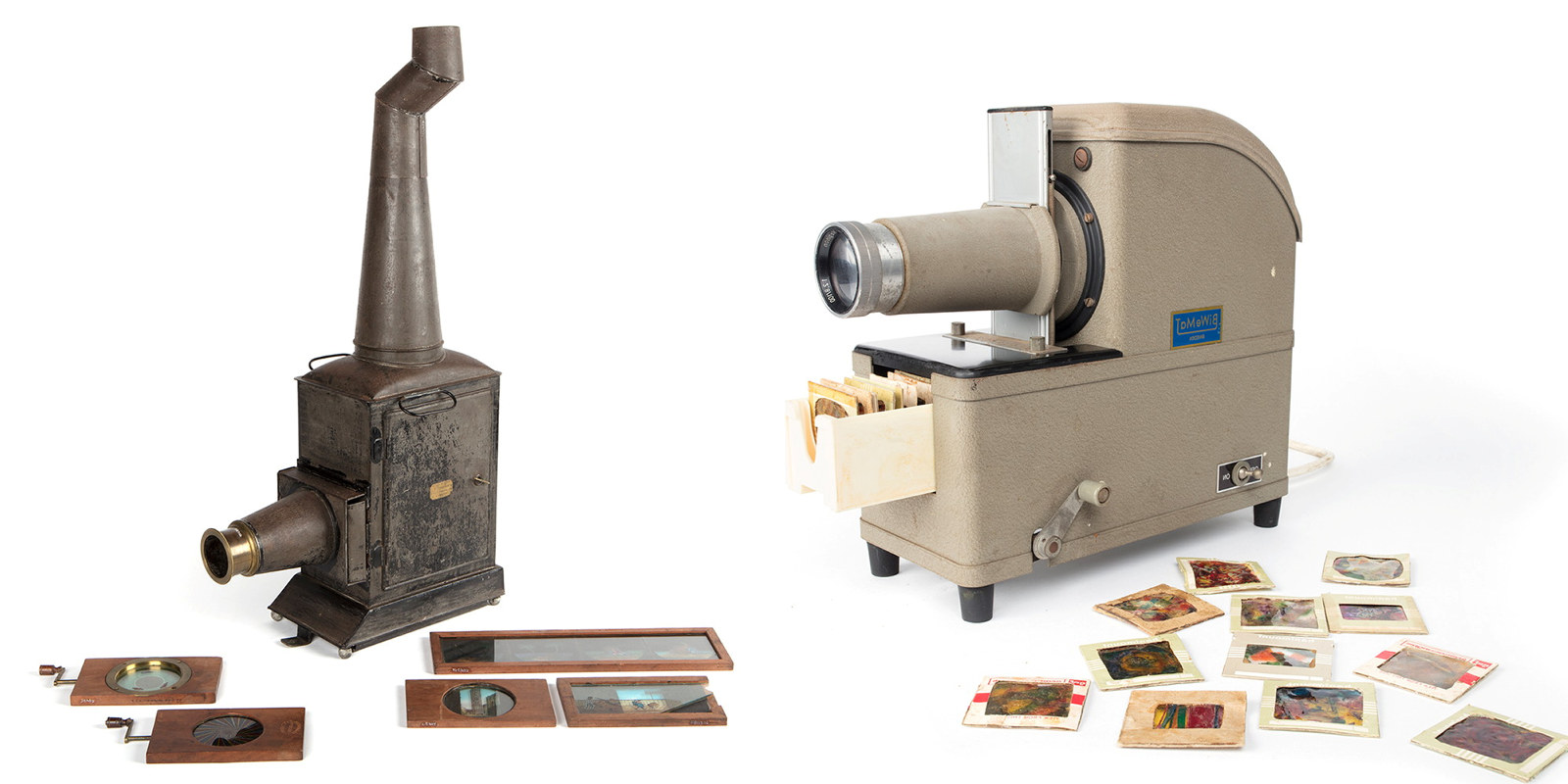
Projected across time
In the late 1960s, John Terry, then a young man living at Rouse Hill Estate, composed avant-garde music which he set to abstract projected images, and performed at various locations in Sydney
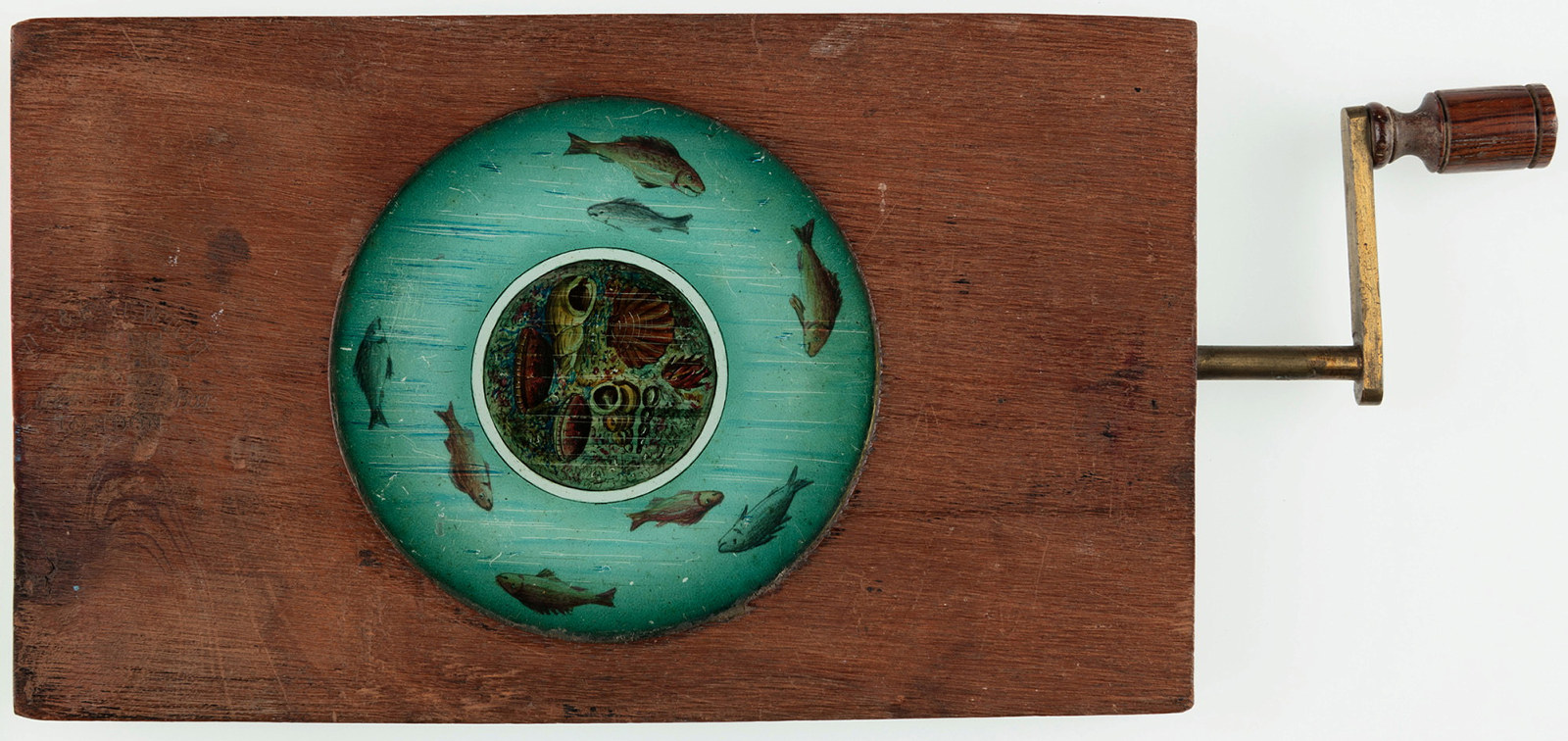
Animated comic sliders for magic lantern
The magic lantern was a popular entertainment technology in the 19th century used to project stories and comic scenes.
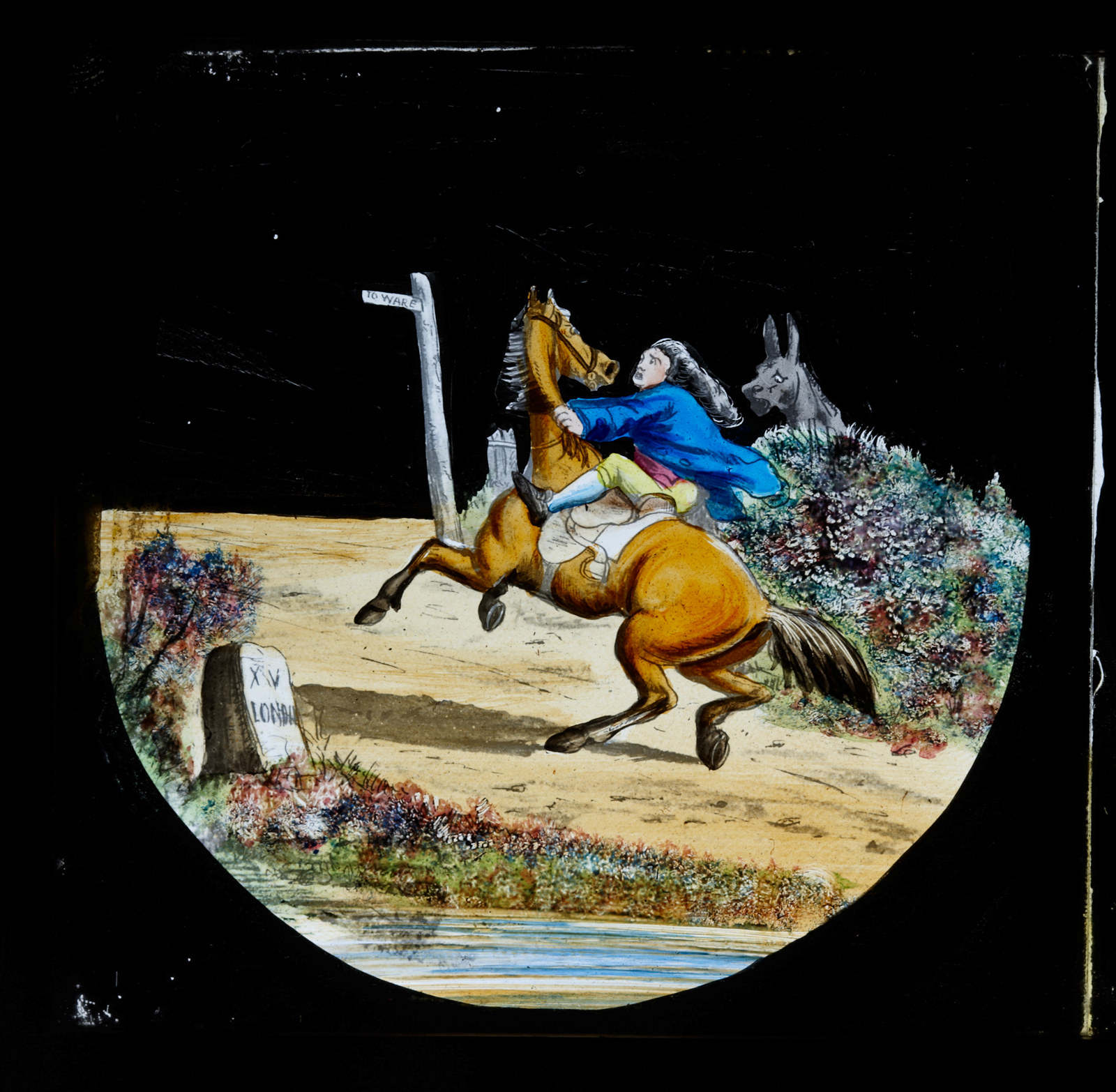
John Gilpin’s Ride
The fictional story of John Gilpin and his misadventures on a runaway horse was originally written as a comic ballad by English poet William Cowper in 1782
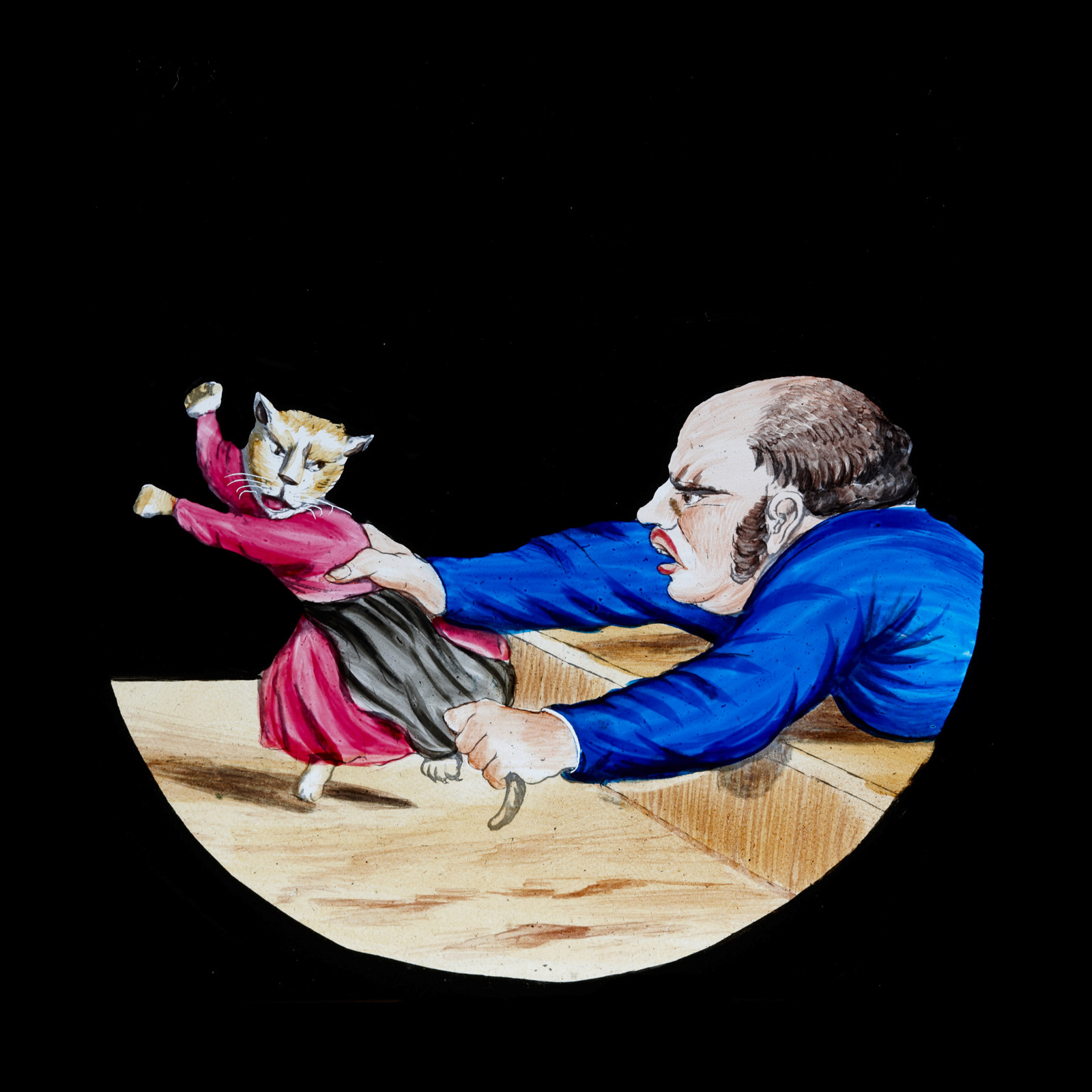
Pussy’s road to ruin
‘Pussy’s Road to Ruin’ is not a comic story but a cautionary moral tale for children
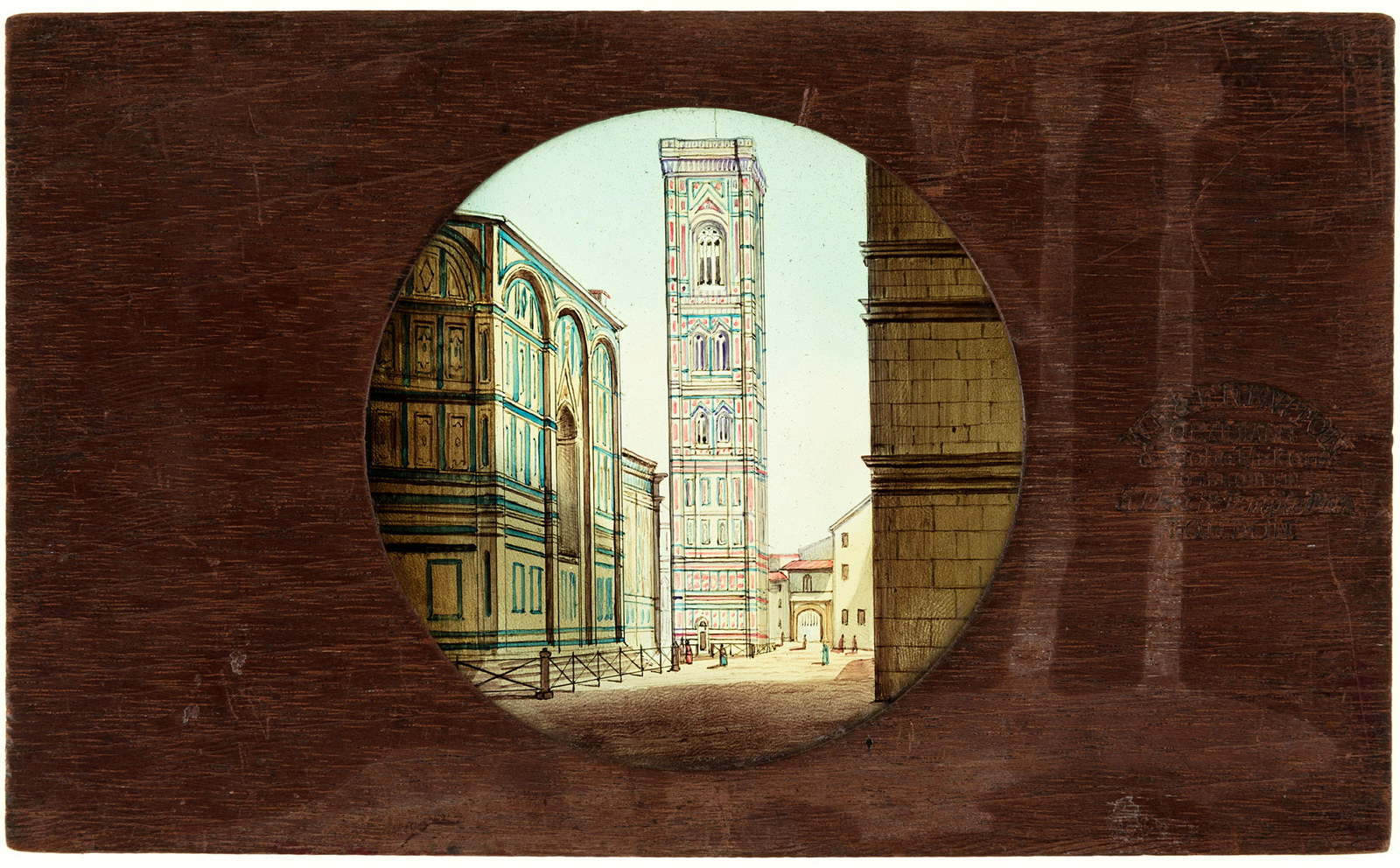
Other lantern slides
As well as moveable comic slides the Rouse Hill Estate collection includes two examples of another type of mechanical slide: slides that incorporated a rack and pinion mechanism to create the circular movement of one slide over another
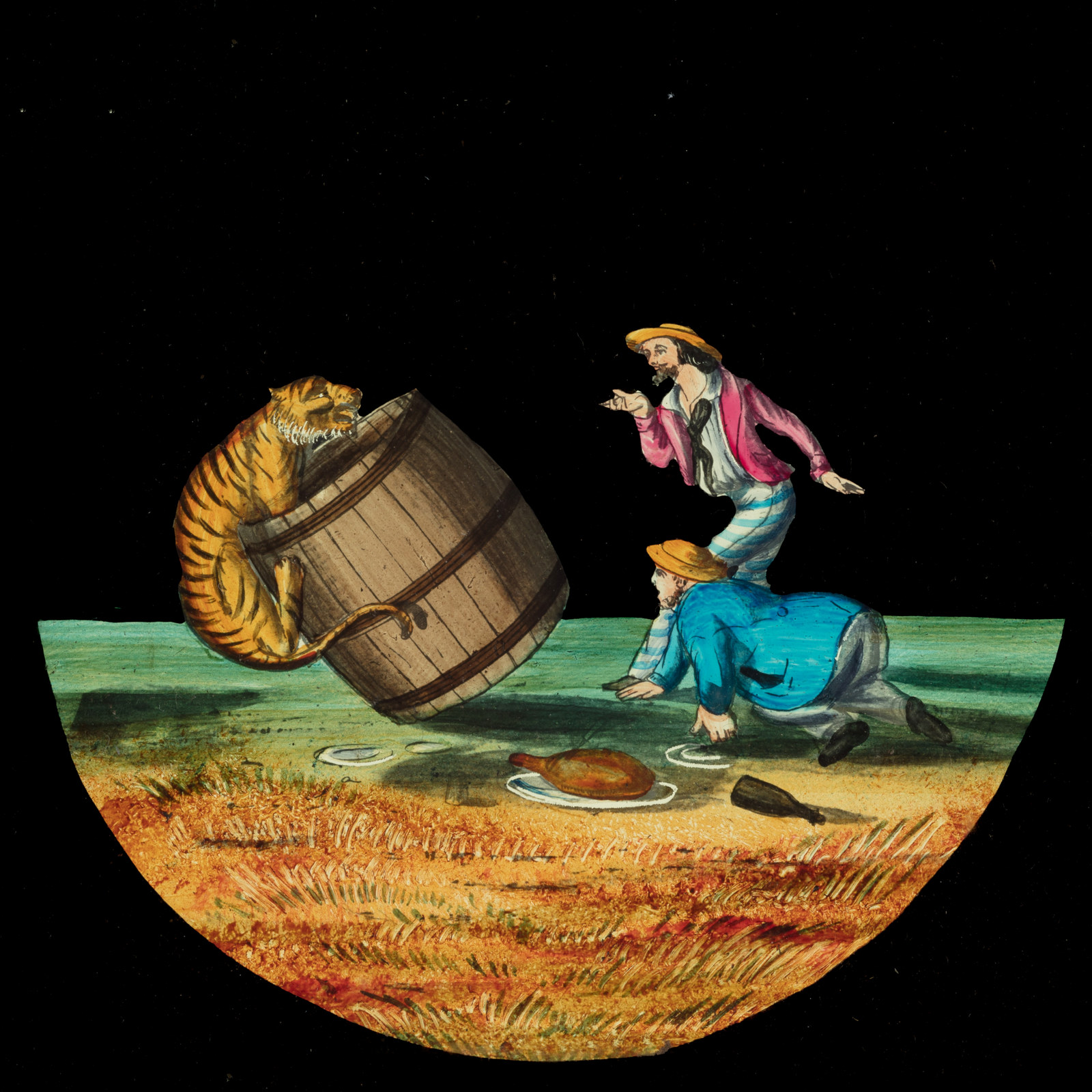
Tale of Tiger and Tub
‘Tiger in the Tub’ is a comic story, told in eight scenes, of two Anglo-Indian residents of Bengal who decide to have a picnic in the countryside
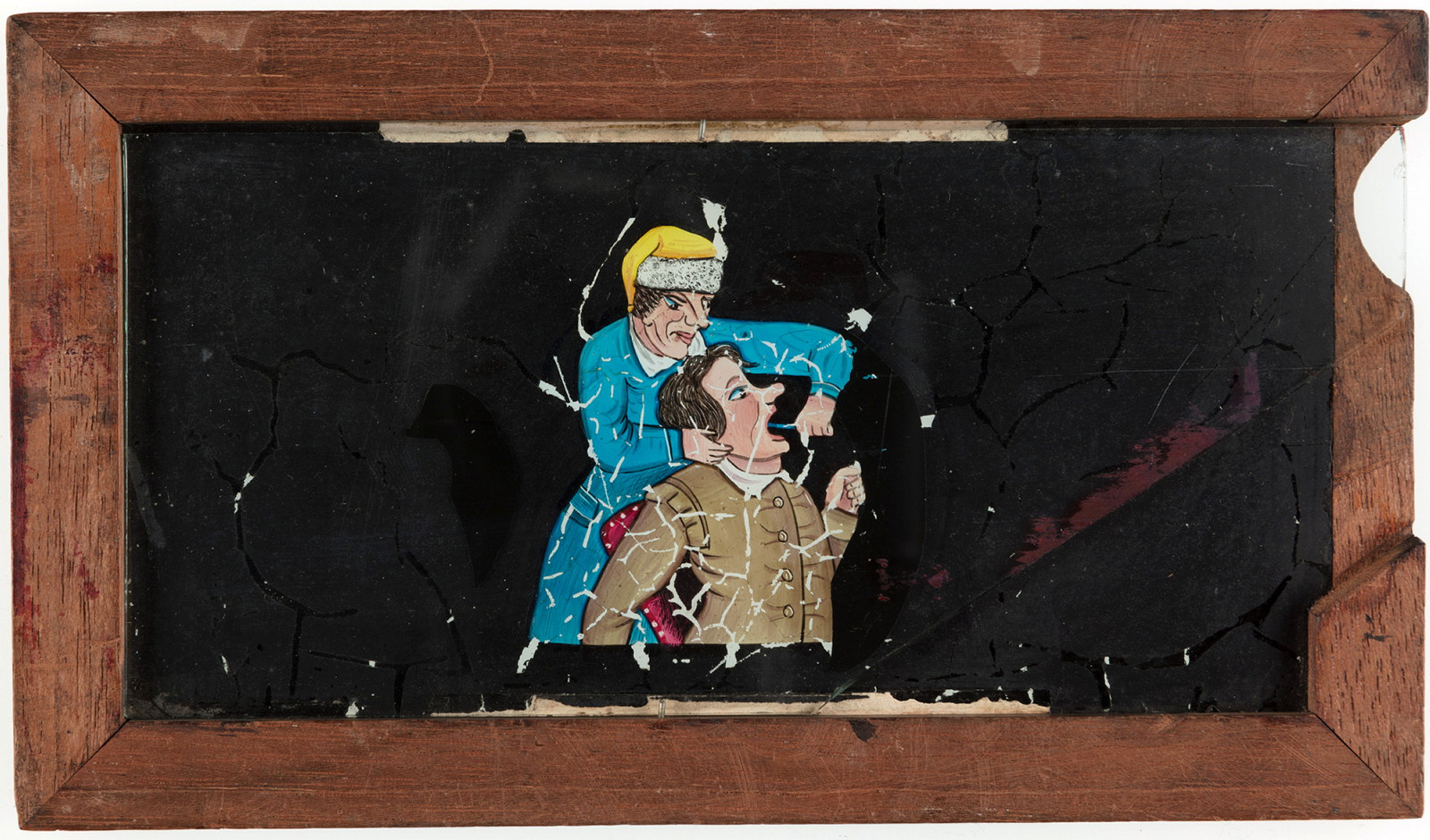
Comic sliders
The Rouse Hill Estate collection of magic lantern slides includes ten comic slip slides, also called sliders or slippers
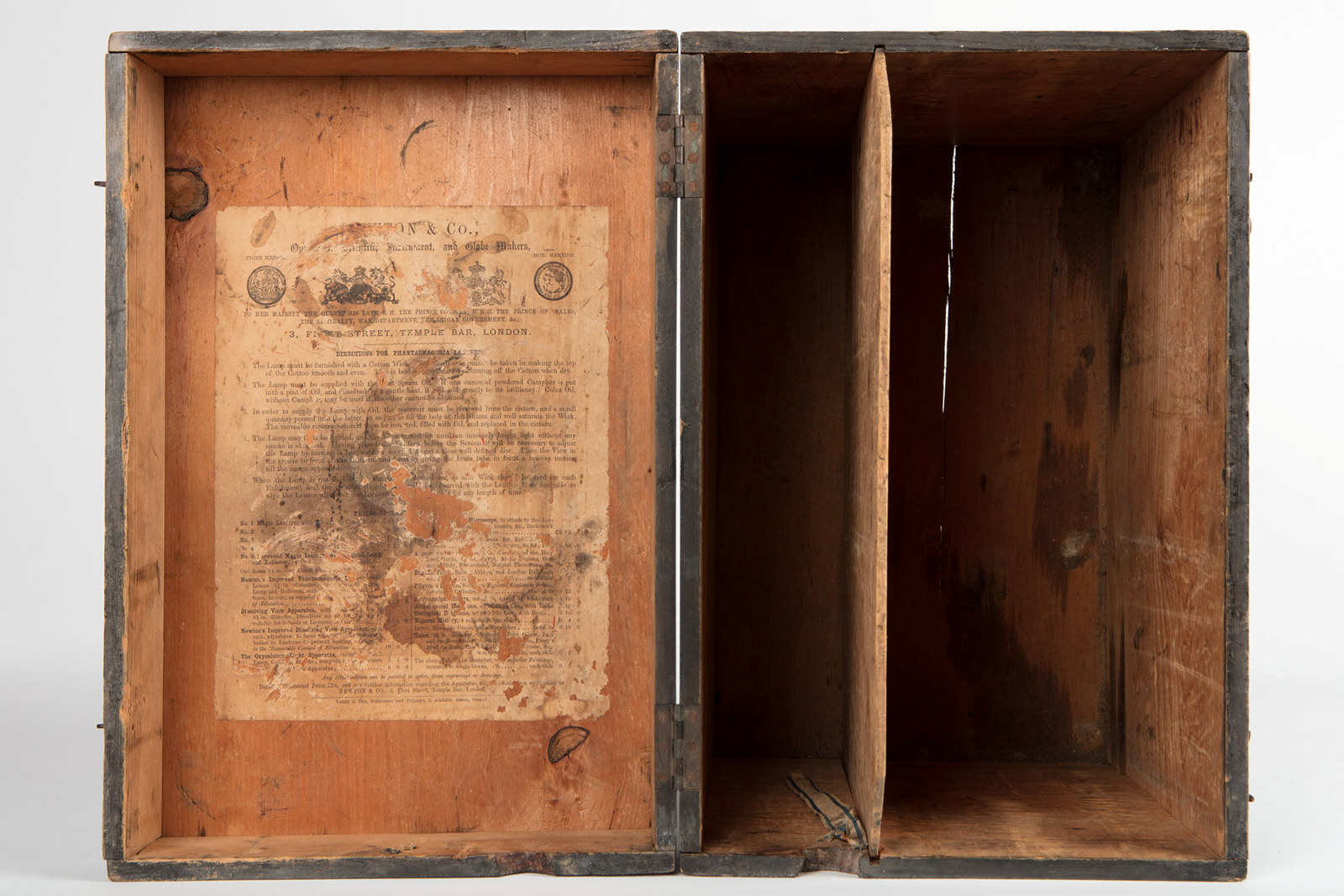
Newton & Co’s ‘Improved Phantasmagoria Lantern’
The magic lantern at Rouse Hill House was manufactured by Newton & Company, Opticians, Scientific Instruments and Globe Makers of Fleet Street, Temple Bar, London
Notes
- “Rouse-Hill” in Sydney Morning Herald 30 January 1866 p.3
About the authors
Megan Martin
Former Head, Collections & Access
Megan is the former head of Collections & Access at Sydney Living Museums. She has a particular interest in the working of the historical imagination, in teasing out the meanings of objects in museums collections and in crafting the stories that can be recovered/discovered through a close reading of those items of material culture.
Holly Schulte
Former Curator Digital Assets
Holly explored the extraordinary potential of digital imaging technology alongside the enduring appeal of analogue photographic collections. She was responsible for a range of collection related tasks with a focus on photography, digitisation and digital asset management. Her research interests address photography, collections, image making and associated technology.
Published on
Rouse Hill Estate
Browse all![Owner bound volume of assorted songs, in the collection of Rouse Hill House & Farm, 1850-1864. [music]](https://images.slm.com.au/fotoweb/embed/2023/10/615fb53b45ca4bfb8d979b01993be8c3.jpg)
‘Home! Sweet Home!’
It may come as a surprise that the expression ‘home, sweet home’ originates from a song title
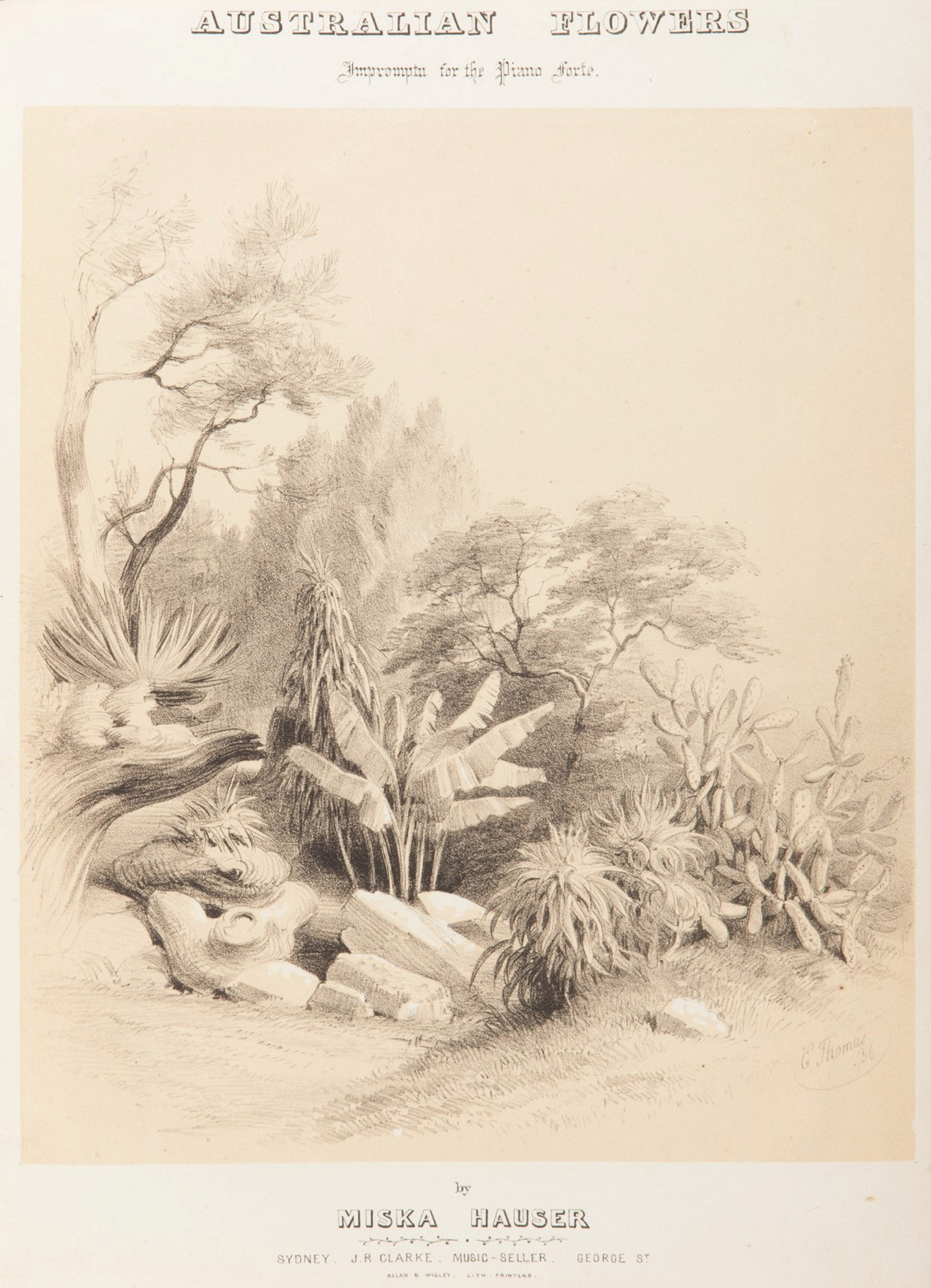
'Australian Flowers'
Given that much of the music played in Australia in the 19th century had been imported, one might ask what constituted an ‘Australian’ piece of music?
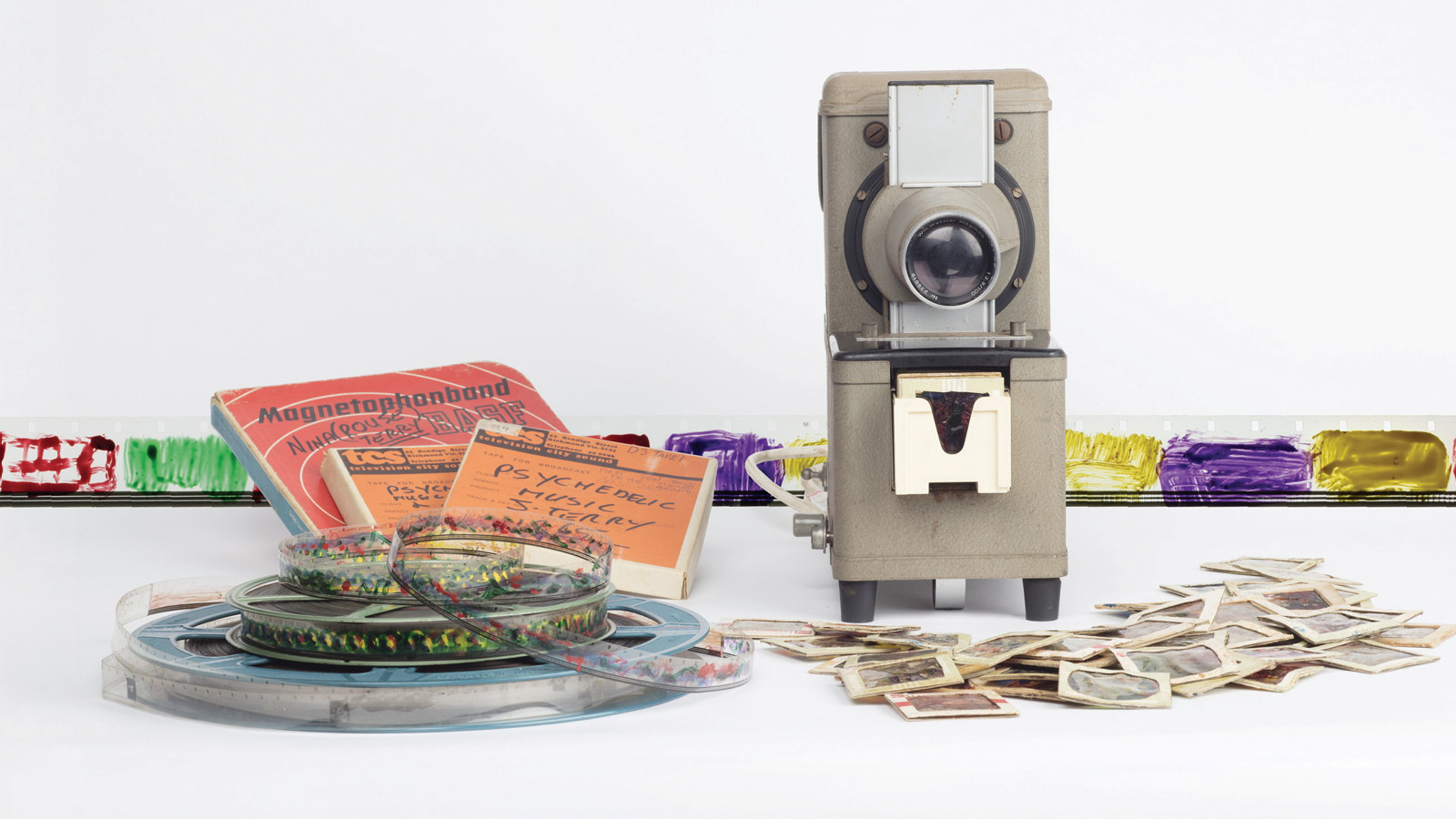
1960s psychedelia at Rouse Hill House
In a short experimental period of music making, the talented young John Terry combined radical musical ideas with abstract imagery and the soundscape of Rouse Hill House
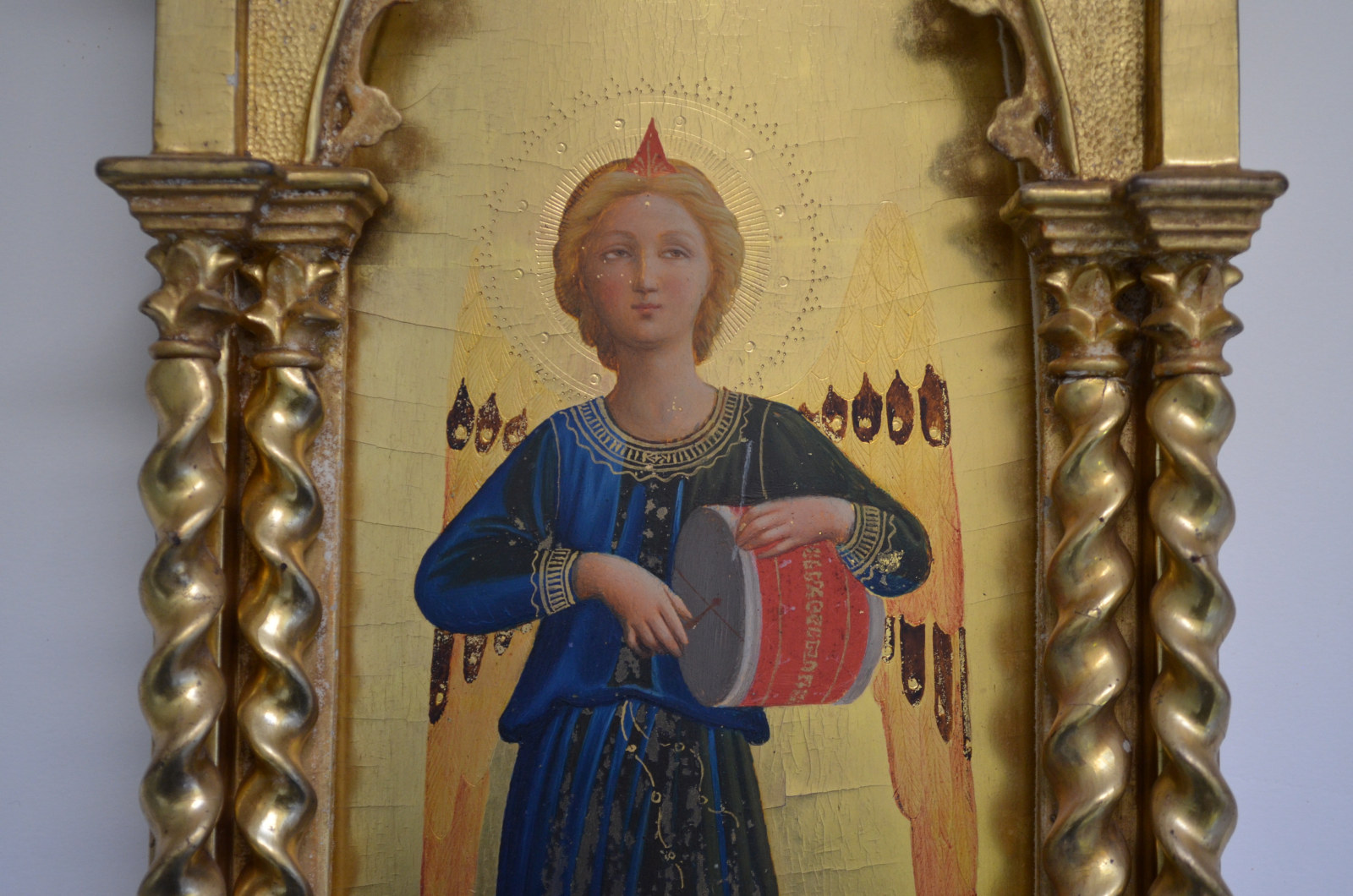
A Gothic Angel
In the drawing room at Rouse Hill your eye is instantly drawn to a small painting on the far wall; a figure of an angel in a shining gilt frame, acquired in the 1870s